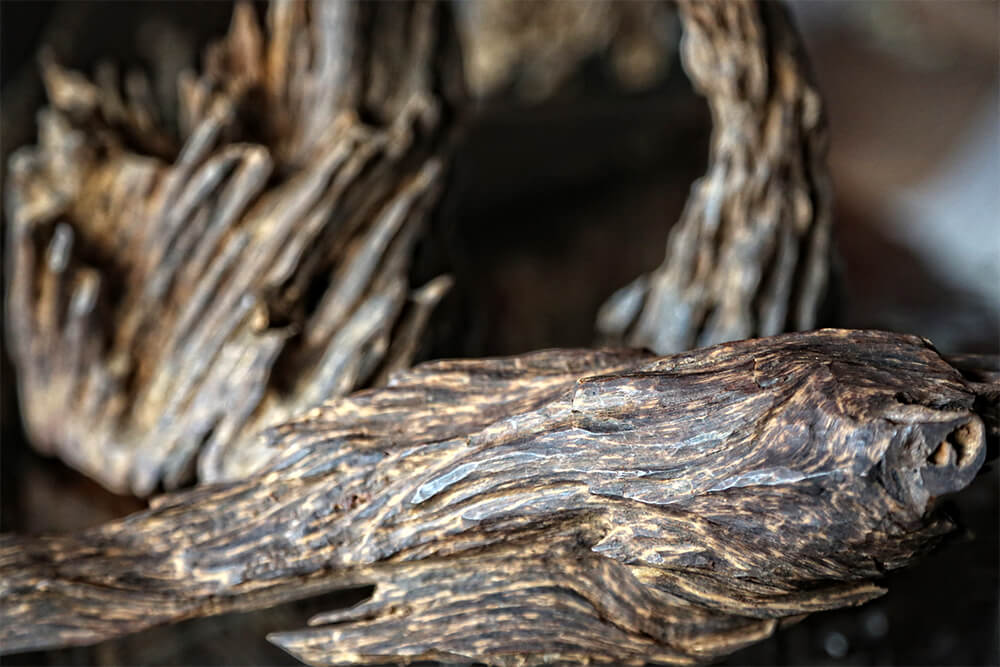Oud Info
On the Natural History of the Highly Coveted ‘Oud Cambodi’
If you’re new to the world of Oud, one word you hear being chanted all over the place is ‘Cambodi.’ So, what is Oud Cambodi, anyway?
In the beginning, there was Oud Hindi. This was the deep, reddish-brown juice that was presented to the Sheikhs and Emirs, Sultans and dignitaries in fancy crystal flasks back in the 1970s as the ultimate olfactory wonder.
Then, there came a stage when the jungles of Assam seemed like they were coughing up the very last trees they had in store, so the Bengali and Indian tycoons of the Oud trade started sniffing around for a solution. Laotian Oud being too sharp when distilled the Hindi way, and Burma being impenetrably closed off for the most part, they could only turn to the ‘next best’ thing down the block, which was ‘Oud Cambodi.’
As the sheiks in white headscarves flew back and forth, from Delhi to Phnom Penh, from Dakka to Phnom Penh, from Dubai to Phnom Penh, from Dammam to Phnom Penh, from Doha to Phnom Penh… all the while repeating the oft-chanted mantra of ‘Oudh Combodi’… the term stuck in the mind of the Oud consuming world. It gained such hold in the brains of Saudis and Emiratis that you could hear them chanting among themselves, as they ate camel mandi, ‘Com-Bo-Di! Com-Bo-Di! Com-Bo-Di!’ And they whispered it in the ears of their spellbound children as they put them to sleep, ‘If you behave yourself, you get a bottle of Combodi.’
Now, as the Bengalis who run the Oudh conglomerates of the Emirates rapped on, something alarming started to happen in the forests of Kampung Speu. And then Pursat. And then Koh Kong… The hunters of Oudh Combodi stopped finding any trees to make their Oudh from. But it was too late. The people had been told that there is nothing as precious or as chic as Oudh Combodi. And so Oudh Combodi they had to have. What to do? It was a decisive moment in the history of Oudh, as the white head-scarfed Sequoia drivers and their Bengali tigers decided it was time to move yet further East in search of their juice. (All the while, the people kept chanting all over the streets of Riyadh, ‘Com-BO-DI! Com-BO-DI!’) And so they discovered Oudh Undonusi (lit. ‘Indonesian Oud’). Of course, this immediately became the new ‘Oudh Combodi.’
Well, a Cambodi is a Hindi is a Thai is a Maroke is a Borneo, or any combination of oils from any of these regions. In reality, a ‘Cambodi’ today is anything but Cambodian. And it hasn’t been since 2004. Since the day I launched my first Oud oil in 2004, I have not smelled genuine Cambodian Oud except on two occasions.
But wait, what about all the ‘fruitilicious’ and ‘jammy’ and ‘figgy’ and ultra-sticky Cambodis and Thaqeels, Koh Kongs and Kampucheas, and all the rest of them that they keep bringing from Islamabad to Vancouver to Victoria to New York City? Do I mean to say that none of these oils are ‘Cambodis’? Unfortunately, that is exactly so. They are either Thai oils that have been oxidized to smell like a faint resemblance of their long-gone progenitors, or Aquilaria crassna trees that are cultivated within the ‘legal’ boundaries of Cambodia, and which bear as much resemblance to their wild forefathers as Oud Yusha does to Qi Nam Khmer. (In case you haven’t smelled both, very little resemblance.)
Stop. Hold it right there. I am not saying that they are inferior, or not noteworthy oils in their own right, each and every (other) one of them. What I am saying is, by smelling Oud Yusha, you’re not smelling Oud Cambodi à la 1970s Cambodi. You’re smelling a very different type of Oud Cambodi, if that’s what you insist that we call it. You’re smelling the ‘Cambodi’ of the Future. The ‘Cambodi’ of the Past is now… history (or better yet, archeology).
Think about this for a second. I’ve distilled I don’t know how many Ouds from all over the agarwood producing world, and I have only smelled genuine, wild-harvested Cambodian Oud twice in my life. The first time was when my distiller, having little to show me apart from what I quickly dismissed as mixtures of either DOP or vetiver, found himself between a rock and a hard place, and finally went into his shrine to pull out oils he’d buried there for 25 and 15 years apiece as devotional items. These he wouldn’t part with for love or money. I offered him $2,000 for a single bottle (slightly over 3 grams) just to have a benchmark which I show people in order to educate. He declined.

